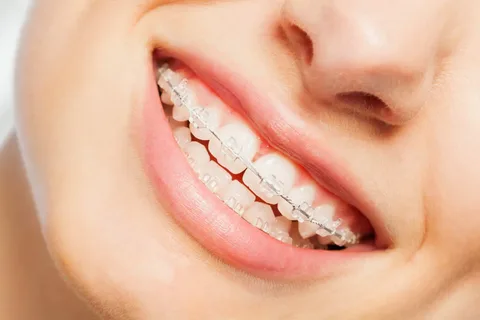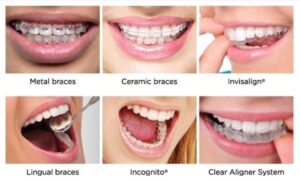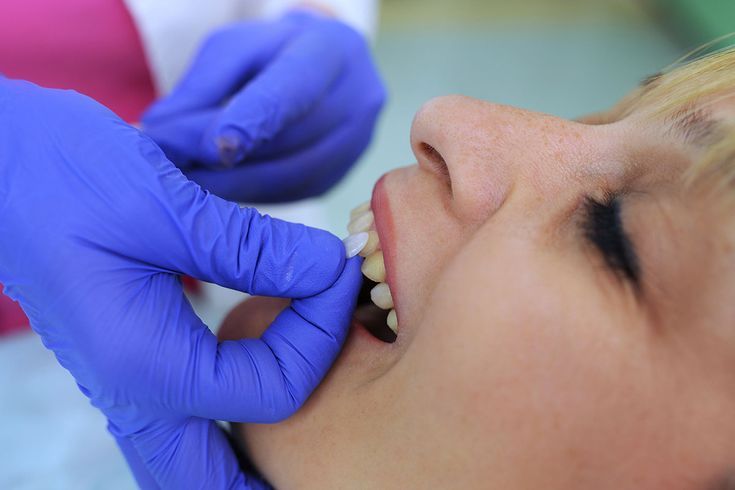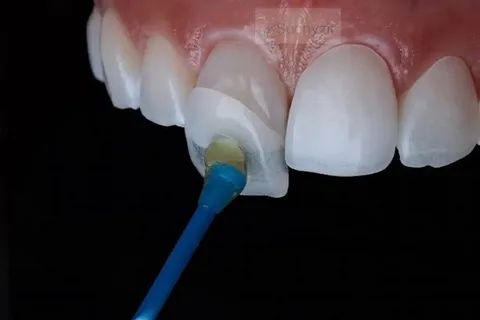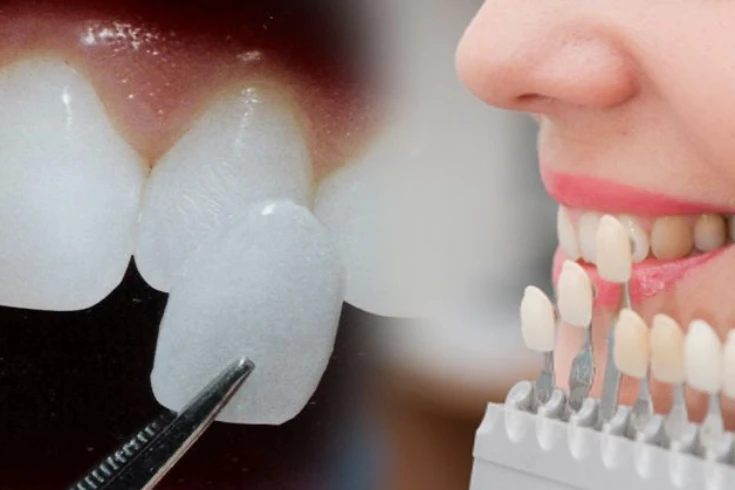What are Dental Braces?
Dental braces are orthodontic appliances designed to straighten and align teeth, improving functionality and aesthetics. They commonly correct dental issues such as crooked teeth, overcrowding, misalignment, and bite problems. Different types of braces are available, each offering unique benefits for patients’ needs and preferences.
Types of braces
- Traditional Metal Braces
- Ceramic Braces
- Lingual braces
- Self-ligating braces
- Clear aligners
What Are Traditional Metal Braces?
Traditional metal braces are the most common type of braces used in orthodontics. They consist of metal brackets bonded to the teeth, connected by a thin wire. The wire is tightened periodically to shift the teeth into their correct positions.
Benefits of Traditional Metal Braces
- Effectiveness: Traditional metal braces are highly effective in treating many orthodontic issues, including severe misalignment and complex bite problems.
- Durability: Made from high-grade stainless steel, metal braces are durable and can withstand the pressures of daily wear.
- Cost-Effective: They are often more affordable than other braces, making them a popular choice.
Considerations:
- Appearance: Metal braces are visible and might concern those seeking a more discreet option.
- Comfort: Some people experience initial discomfort or irritation from the metal brackets and wires.
What Are Ceramic Braces?
Ceramic braces are similar to traditional metal braces but use clear or tooth-colored brackets that blend with the natural color of the teeth. The wires are also available in a tooth-colored option, making them less noticeable.
Benefits of Ceramic Braces:
- Aesthetic Appeal: Ceramic braces are much less noticeable than metal braces, making them a popular choice for adults and teens concerned about their appearance.
- Effective for Most Cases: They work similarly to metal braces and are effective for treating a wide range of orthodontic issues.
Considerations:
- Durability: Ceramic brackets can be more brittle than metal ones, which may lead to more frequent breakages.
- Cost: Ceramic braces tend to be more expensive than traditional metal braces.
- Staining: The brackets can become stained, especially if proper oral hygiene is not maintained.
What Are Lingual Braces?
Lingual braces are placed on the teeth’ back (lingual side), making them completely invisible from the front. They function similarly to traditional metal braces but are custom-made to fit the contours of your teeth.
Benefits of Lingual Braces:
- Invisible: Because they are placed on the inner side of the teeth, lingual braces are not visible when you smile or speak.
- Effective for Complex Cases: They can address complex orthodontic issues while remaining discreet.
Considerations:
- Comfort: Lingual braces can cause more discomfort and irritation to the tongue and may take longer to get used to.
- Cost: They are generally more expensive than traditional metal and ceramic braces.
- Cleaning: It can be more challenging to clean lingual braces and maintain oral hygiene.
What Are Clear Aligners?
Clear aligners are a modern orthodontic solution consisting of transparent, removable trays designed to move your teeth into the desired position gradually. Popular brands include Invisalign and ClearCorrect.
Benefits of Clear Aligners:
- Discreet Appearance: Clear aligners are nearly invisible, making them attractive for those who want to straighten their teeth without visible braces.
- Removable: They can be removed for eating, drinking, and brushing, which allows for easier oral hygiene compared to fixed braces.
- Comfort: The smooth plastic aligners are more comfortable and less irritating to the gums and cheeks.
Considerations:
- Discipline Required: Clear aligners must be worn for 20-22 hours daily to be effective. Compliance is crucial for successful treatment.
- Cost: Depending on the length and complexity of the treatment, they can be more expensive than traditional braces.
- Limited Scope: While effective for many cases, clear aligners may not be suitable for severe orthodontic issues or complex cases.
What Are Self-Ligating Braces?
Self-ligating braces use a specialized bracket design that eliminates the need for elastic bands to hold the archwire. Instead, the brackets have a built-in mechanism that holds the wire securely.
Benefits of Self-Ligating Braces:
- Fewer Adjustments: The self-ligating mechanism can reduce the adjustments needed, potentially shortening the overall treatment time.
- Less Friction: With no elastic bands, there is less friction between the wire and the bracket, which can result in a more comfortable experience.
- Aesthetic Options: Self-ligating braces are available in both metal and ceramic options.
Considerations:
Cost: They may be more expensive than traditional metal braces due to the advanced technology used.
Complex Cases: While effective for many cases, they might not suit all orthodontic issues.
How do you know which Braces are best for you?
Factors to Consider
- The severity of Orthodontic Issues: The complexity of your dental alignment and bite issues can influence which braces are most appropriate.
- Aesthetic Preferences: Ceramic or lingual braces or clear aligners might be more suitable if you prefer a less noticeable option.
- Lifestyle and Comfort: Consider how each type of braces fits with your daily routine and comfort level. Clear aligners offer convenience with removability, while lingual braces may cause more tongue irritation.
- Budget: Evaluate the cost of different braces options and what fits within your budget. Remember to consider the initial cost and any potential long-term costs associated with maintenance and adjustments.
Consultation with an Orthodontist
The best way to determine which braces are right for you is to consult an orthodontist. They will assess your specific needs and recommend the most appropriate treatment based on your dental health, treatment goals, and personal preferences.
What are the typical side effects of braces?
There are some typical and expected side effects of braces, such as:
- Temporary discomfort (which typically occurs the first day and any time your dentist tightens your braces).
- Jaw pain.
- Difficulty in eating.
- Irritation on lips, inner cheeks, and tongue.
What age is best for braces?
The best age to get braces is between 9 and 14, but you are always young for orthodontics. If you are younger, your jaw and bones are still flexible, making it easier for them to shape. Adult braces are also effective, but they take a lot of time.
Emerging Trends in Braces:
Advances in Technology
Orthodontics is continuously evolving, with new technologies enhancing the effectiveness and comfort of braces. Innovations such as 3D imaging, digital treatment planning, and advanced materials are improving the precision and efficiency of orthodontic treatments.
Customization and Personalization
Future trends in braces technology are focusing on greater customization and personalization. These innovations aim to provide more tailored solutions for individual orthodontic needs, from customized aligners to advanced bracket designs.
FAQs
How long does orthodontic treatment with braces typically take?
Treatment duration varies from 18 months to 3 years, depending on the case’s complexity.
Are dental braces painful?
Initially, patients may experience discomfort or soreness as the teeth adjust, but this typically subsides with time.
Can adults get braces?
Adults can benefit from orthodontic treatment with braces to correct misalignment and enhance oral health.
What is the cost of dental braces?
Costs vary depending on the type of braces and the complexity of treatment. For an accurate estimate, it’s best to consult with an orthodontist.
How often should I visit the orthodontist during braces treatment?
Regular visits every 4-8 weeks are usually necessary for adjustments and monitoring progress.

